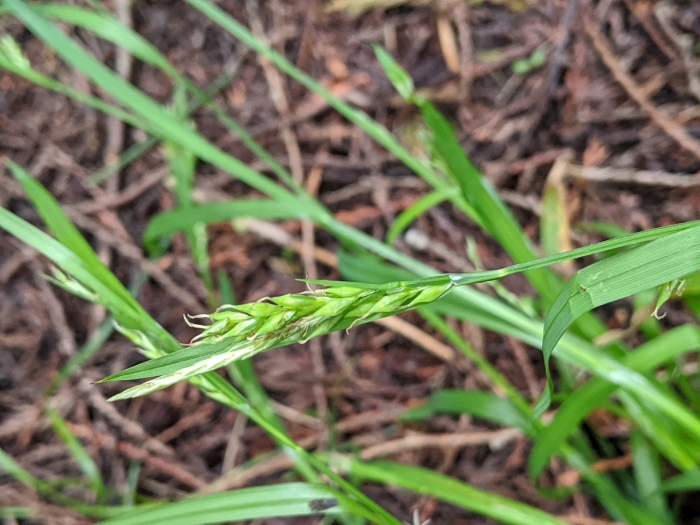Henderson’s Sedge
(Carex hendersonii)
Henderson’s Sedge (Carex hendersonii)
/
/

© John A Haskins
CC BY 4.0
Image By:
© John A Haskins
Recorded By:
Copyright:
CC BY 4.0
Copyright Notice:
Photo by: © John A Haskins | License Type: CC BY 4.0 | License URL: http://creativecommons.org/licenses/by/4.0/ | Uploader: olyjah | Publisher: iNaturalist |

























Estimated Native Range
Summary
Carex hendersonii, commonly known as Henderson’s sedge, is a perennial sedge native to moist meadows, streambanks, and forested wetlands in western North America, including southwestern Canada and the western United States. It forms dense tufts of brownish culms, typically 18-34 inches in height, with bright green, grass-like leaves that can reach up to 20 inches long. The plant blooms in late spring to early summer (May and June), producing inconspicuous spikes of flowers on lateral stalks that are more interesting for their texture than their color.
Henderson’s sedge is valued for its ability to stabilize soil and its adaptability to wet conditions, making it suitable for riparian restoration projects and rain gardens. It is also used in shaded or woodland gardens for ground cover. This sedge prefers consistently moist soil and partial to full shade, though it can tolerate some sun in cooler climates. While generally low-maintenance, it can be susceptible to rust and root rot if conditions are too dry. Gardeners should be aware that in ideal conditions, it can spread vigorously, potentially becoming invasive.CC BY-SA 4.0
Henderson’s sedge is valued for its ability to stabilize soil and its adaptability to wet conditions, making it suitable for riparian restoration projects and rain gardens. It is also used in shaded or woodland gardens for ground cover. This sedge prefers consistently moist soil and partial to full shade, though it can tolerate some sun in cooler climates. While generally low-maintenance, it can be susceptible to rust and root rot if conditions are too dry. Gardeners should be aware that in ideal conditions, it can spread vigorously, potentially becoming invasive.CC BY-SA 4.0
Plant Description
- Plant Type: Grass
- Height: 1.5-2.5 feet
- Width: 1-1.5 feet
- Growth Rate: Moderate
- Flower Color: N/A
- Flowering Season: Spring, Summer
- Leaf Retention: Deciduous
Growth Requirements
- Sun: Part Shade, Full Shade
- Water: Medium
- Drainage: Medium
Common Uses
Bird Garden, Low Maintenance, Water Garden
Natural Habitat
Moist meadows, streambanks, and forested wetlands
Other Names
Common Names: Meadow sedge
Scientific Names: , Carex hendersonii, Carex laxiflora var. plantaginea,
GBIF Accepted Name: